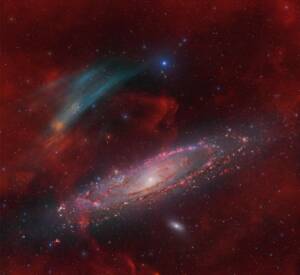
Discovery of the M31 [OIII] emission arc
Recently, a major discovery by an international team of amateur astronomers and scientists has become a huge online hit, and this new discovery is just located in one of the
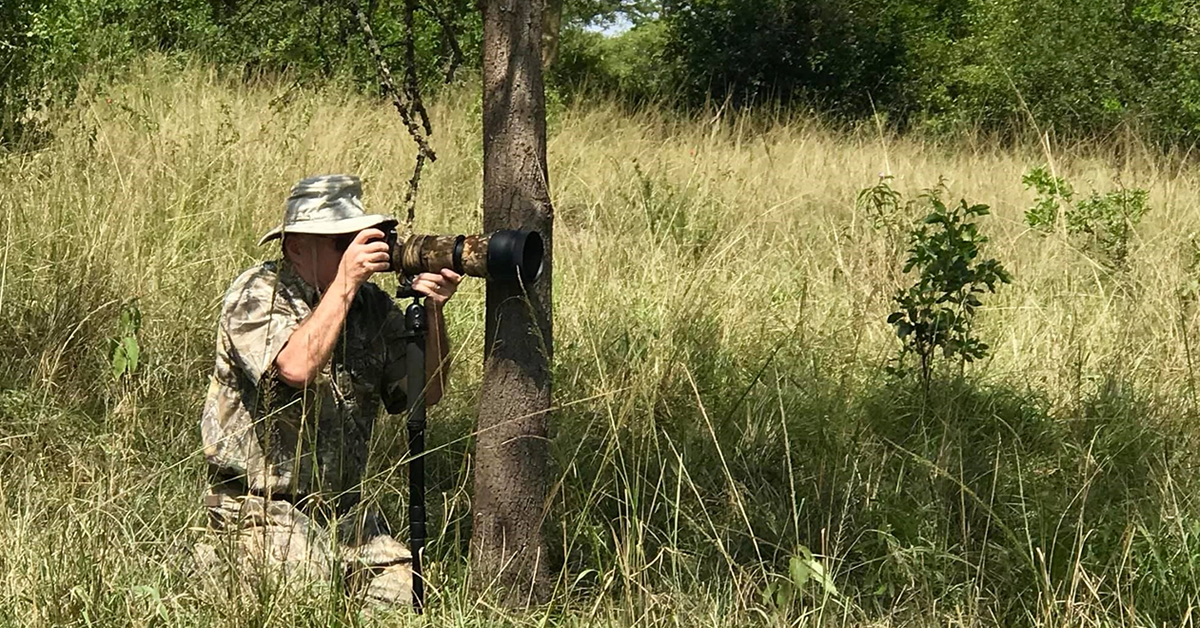
Thank you for selecting my photograph for #ASIWEEK – I appreciate that others enjoy my work. I live in rural New Mexico (NM), USA, with my wife, some chickens, ducks and bees. My wife and I both retired from the U.S. Foreign Service, after a previous 23-year career in the U.S. Air Force. We have a wonderful daughter who also lives in NM. While my wife has settled into farming life, I have become a full-time astrophotographer – a life-long dream. In addition to astronomy, I love travel, downhill skiing, SCUBA, and also Landscape and wildlife photography.

Astronomy has been a life-long passion of mine, ever since I first learned about the Moon and planets in elementary school. To understand exactly where we live in the universe adds a sense of belonging that many may gain from religion. To understand how everything was created by nature, is profound. As far as astrophotography, there was a “Eureka” moment when I learned that a person can actually photograph the Cosmos from their own home. I learned this when I first read an astronomy magazine in High School. I had always thought images of galaxies and nebula had to be done in massive professional observatories. Learning that anyone could do this in their own backyard was nearly a life-changing moment for me. I had always loved photography, and the realization that I could photograph the universe gave me a new goal in life.
I currently use an iOptron CEM120 EC2 mount, Celestron C11 EdgeHD and an ASI1600MM Pro. I was previously using a portable CEM25P, and smaller 71mm WO Star71 quadruplet scope – but even then I used the ASI1600MM Pro. The ASI1600MM Pro was my first digital astro camera and it is still my only deep-sky camera. I also have an ASI462MC for planetary work, but I am still learning that aspect of astrophotography.
The best piece of equipment I have right now is my home observatory. I built it last fall and it changed the way I do astrophotography, and allowed me the kind of precision that is difficult with portable gear. All my gear can now be operated from within the control room, or via the Internet from anywhere in the world via INDI and KStars.

Photographing M104 was a longtime goal of mine – so I wanted to do it justice. The problem is that this is a small target, and has few details that are visible with modest telescopes. This meant that the smallest details would be critical to make this image pop out. Seeing, transparency, tracking/guiding and focus would all have to be perfect. I used the ASI1600MM Pro through a ZWO Luminance filter binned 1-1 to achieve the highest resolution. I binned the RGB colors 2-2.
I waited until the sky conditions were perfect – which fortunately is what New Mexico is famous for. I have an Esatto motorized focuser which helped maintain perfect focus, via KStars’s EKOS astro imaging software. With the ASI 1600MM Pro camera’s small pixel size, I knew I needed to track within 0.4 arc seconds accuracy. Using SEP Multistar guiding, I was able to easily maintain the CEM120 mount tracking to that level of accuracy. I used long 10-second guide exposures to ensure I had plenty of good good-stars available, while avoiding having periods of poor seeing introduce tiny guide errors. Fortunately, this EC2 model mount is designed to track to that high accuracy on its own between guide exposures very well.
Finally, I dithered every two exposures which allowed me to use the Drizzle integration technique in post-processing to further increase resolution in the final image. I recently used this same technique to not only capture M51 in great details, but also a faint quasar the lies 11 billion light-years away (yellow circle).

I really love imaging deep-sky nebula. Small galaxies like M104 are new to me. I am now also starting to image tiny planetary nebula and also popular objets but at longer focal lengths – as these are more difficult to capture and less popular. I enjoy the challenge!



Like art, there is never a comfortable time to stop. I just have to force myself to stop. I usually spend about 8 to 12 hours before I have a good image ready to share. Then, over several days I will make changes until I am somewhat satisfied and ready to put an image away.
Yes, it is certainly the most hands-on part of astrophotography. Once I set up my imaging sequence, I can go to sleep. But post-processing is a mix of technical skill and art, so there is a great deal of hands-on work that requires much more constant attention and judgment. This is the part that can make or break an image. Post-processing can ruin a perfectly captured image much easier than it can create a beautiful piece of art. There is no simple one-click option for post-processing. It requires skills that must be learned the hard way.
Yes, I am active with our local astronomy group in Albuquerque, New Mexico called TASS – The Albuquerque Astronomical Society.
No. I have my own observatory in my own backyard, with Bortle 4 skies. I can travel an hour to get to level 1 skies, but I am doing well in my own yard right now. However, I was recently living and working in Uganda – a country right on the equator in which only 10% of the population has commercial power. The night skies were spectacular – although we had to maintain a campfire to keep lions, leopards, Cape buffalo, hippos and elephants away!

Pay attention to the details and don’t bother imaging when you know that the conditions are not good. You’ll only waste your time and cause unnecessary frustration. Astrophotography has no shortcuts and taking poor images can’t be fixed later.
I like where it has gone over the last five years. I hope to see the price of cameras come down though. Not many people can afford dedicated astro cameras that cost over $2,000. I’d like to see better quality filters at a mire affordable price too.
My first digital astro camera was the ASI1600MM Pro. I learned about this camera from the wonderful website Cloudynights. I knew I wanted to do narrow-band imaging, and the 1600MM was considered the best at the time.
I would like to learn the skill of high-resolution planetary and lunar imaging.

Recently, a major discovery by an international team of amateur astronomers and scientists has become a huge online hit, and this new discovery is just located in one of the
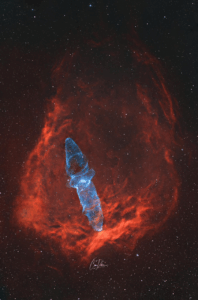
To most people, this might just look like a pretty picture. But to astrophotographer Cem Diken, it’s the result of three years of chasing a nearly invisible ghost in the
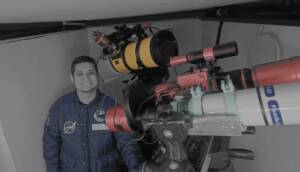
I was born in Guadalajara, I’m 38 years old, a musician, communications and electronics engineer, and president of the Guadalajara Astronomical Society A.C. since 2020. First Contact with Astronomy Since
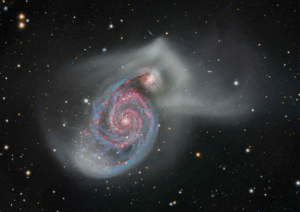
This stunning collaborative project comes from astrophotographers Alex Linde and Thomas Hansson, who joined forces across borders to photograph the Whirlpool Galaxy from Sweden, Poland, and Texas, USA. Thomas traveled across
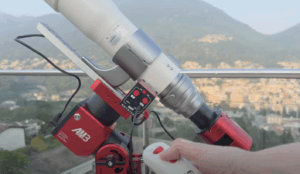
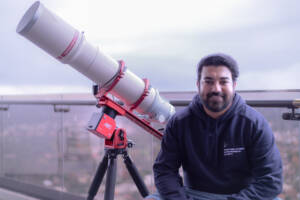
“Two thoughts immediately crossed my mind—the vastness of the cosmos, and that I could also create images like the ones that inspired me.” ” If you spend more time debugging than